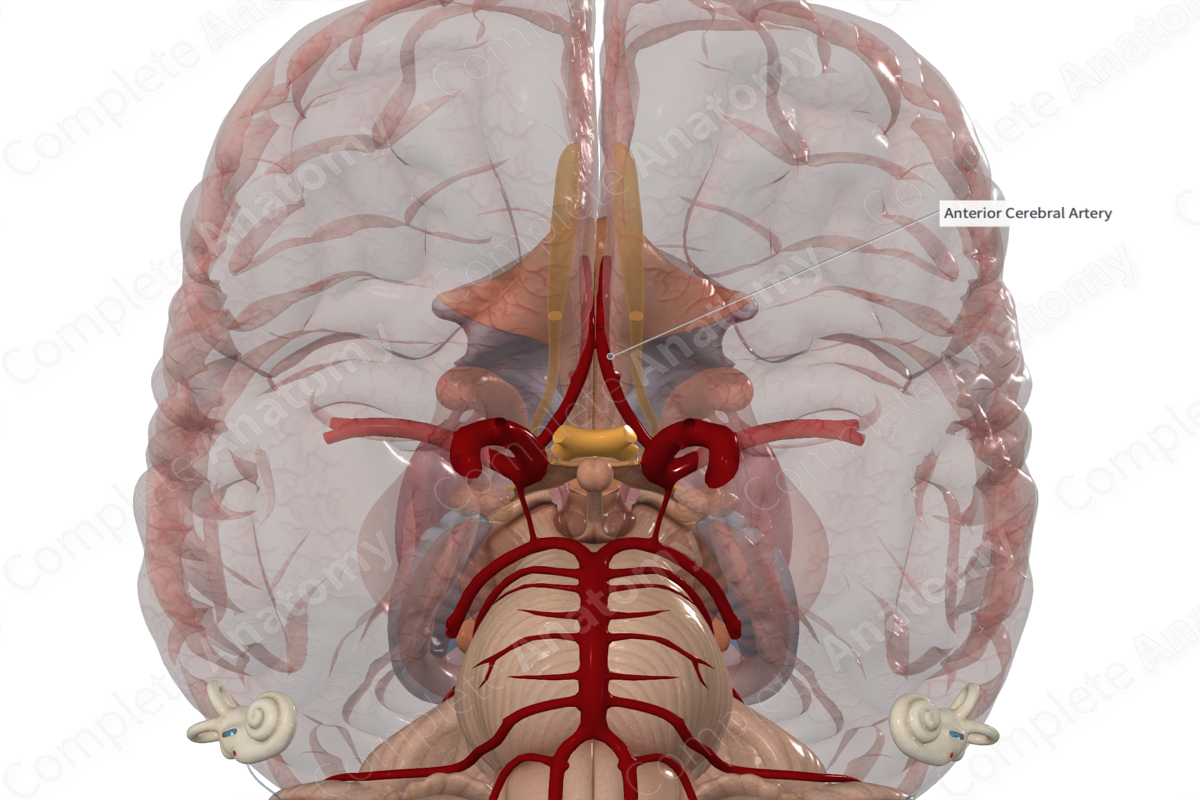
Quick Facts
The anterior cerebral artery is one of the two terminal branches of the internal carotid artery, the other being the middle cerebral artery.
It travels anteromedially, superior to the optic nerve, to the longitudinal cerebral fissure. It is in this area that it connects with the contralateral anterior cerebral artery, via the anterior communicating artery. It then curves, in a posterosuperior direction, around the genu of the corpus callosum. The anterior cerebral artery ends by dividing into the callosomarginal and pericallosal arteries.
For descriptive purposes, the anterior cerebral artery is described as having a precommunicating part and a postcommunicating part. The precommunicating part is the portion of the artery that lies proximal to the anterior communicating artery, while the postcommunicating part is the portion of the artery that lies distal to it.
Along it path, the precommunicating part of the anterior cerebral artery gives off the proximal medial striate artery and anterior perforating branches; while the postcommunicating part gives off the medial frontobasal, polar frontal, callosomarginal, and pericallosal arteries.
Overall, the anterior cerebral artery and its branches provide an arterial supply to the frontal and parietal lobes, corpus callosum, and structures of the diencephalon.
Learn more about this topic from other Elsevier products
Anterior Cerebral Artery

The anterior cerebral artery terminates as the callosal marginal and pericallosal arteries that sweep caudally along the medial surface of the cerebral hemispheres reaching the parieto-occipital sulcus.




